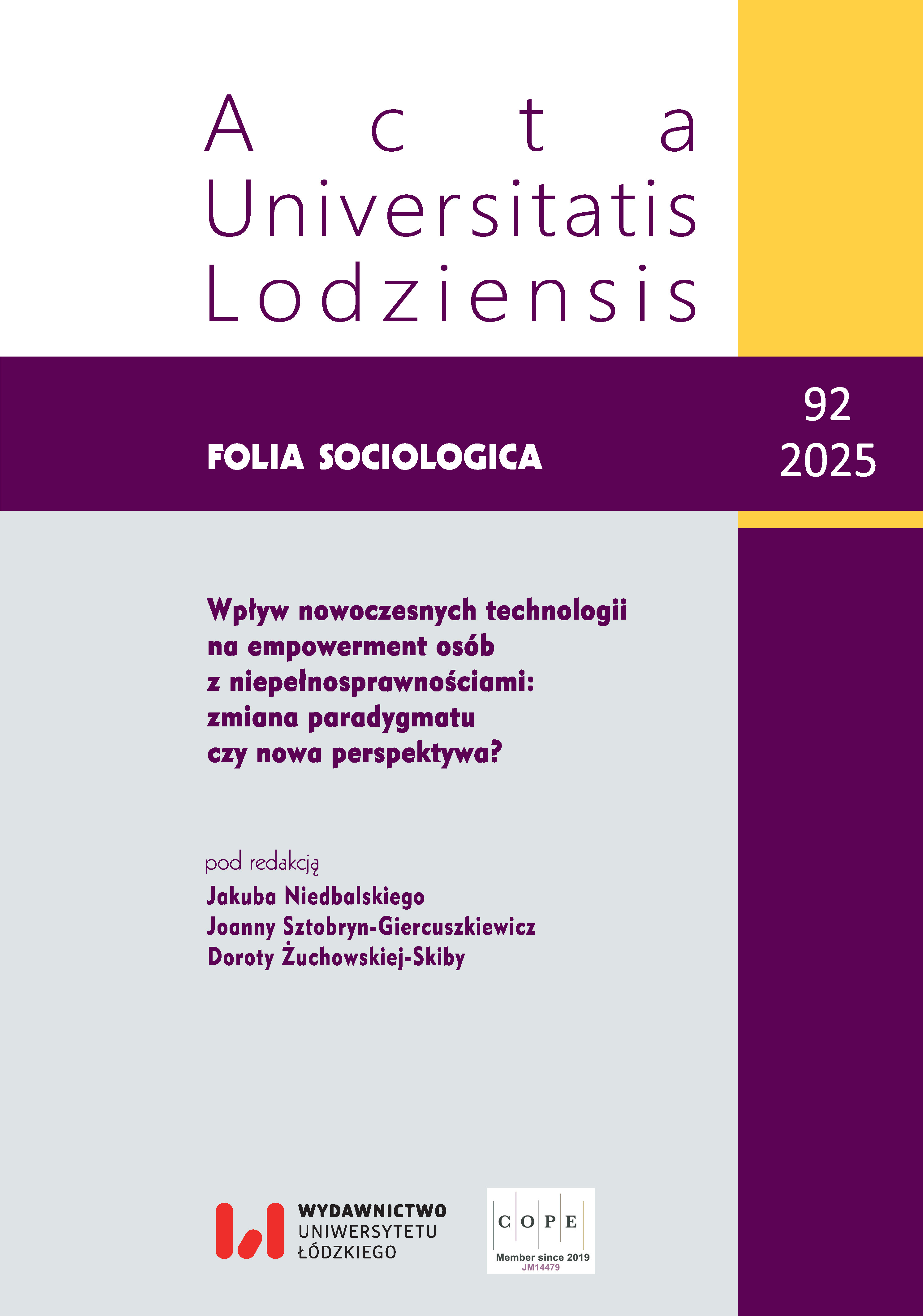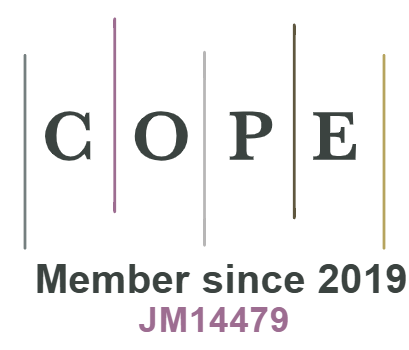Kamienie milowe w dostępności w grach wideo w kontekście osób z dysfunkcjami wzroku
DOI:
https://doi.org/10.18778/0208-600X.92.05Słowa kluczowe:
gracze niewidomi, gracze słabowidzący, dostępność, dostępność w grachAbstrakt
Celem niniejszego tekstu jest omówienie zagadnienia dostępności w grach, i jego historii, w odniesieniu do graczy z wadami wzroku. Przyjęta perspektywa skupia się na rozwiązaniach w samych grach. Od 2010 r. nastąpił szybki rozwój opcji dostępnościowych w grach, wynikający ze zmiany prawa amerykańskiego. W pracy szczególna uwaga poświęcona jest problemom, z którymi borykają się gracze z dysfunkcjami wzroku podczas rozgrywki, a także propozycjom ich rozwiązania oferowanym przez producentów gier.
Bibliografia
Archambault D., Ossmann R., Gaudy T., Miesenberger K. (2007), Computer Games and Visually Impaired People, University of Linz, Linz.
Google Scholar
Beeston J., Power C., Cairns P., Barlet M. (2018), Characteristics and Motivations of Players with Disabilities in Digital Games, University of York, York.
Google Scholar
Dawn A. (2023), How accessible is Dead Island 2?, https://www.gamegrin.com/articles/how-accessible-is-dead-island-2/ (dostęp: 18.06.2023).
Google Scholar
Foster G. (2022), Fans praise The Last Of Us Part 1ʼs accessibility options, https://www.thegamer.com/the-last-of-us-part-1-accessibility-options/ (dostęp: 10.05.2023).
Google Scholar
Gallant M. (2020), 60+ settings make this Naughty Dogʼs most accessible game yet, https://blog.playstation.com/2020/06/09/the-last-of-us-part-ii-accessibility-features-detailed/ (dostęp: 17.06.2023).
Google Scholar
DOI: https://doi.org/10.1055/s-0040-1721631
Gałuszka D. (2018), Gry wideo w perspektywie osób niepełnosprawnych, [w:] J. Niedbalski, M. Racław, D. Żuchowska-Skiba (red.), Oblicza niepełnosprawności w teorii i praktyce, Wydawnictwo Uniwersytetu Łódzkiego, Łódź
Google Scholar
Gamingbible (2020), Games for all the players: A history of accessibility in video games, https://www.gamingbible.com/features/games-for-all-the-players-a-history-of-accessibility-in-video-games-20200124 (dostęp: 3.06.2023).
Google Scholar
Gerli D. (2023), The making Of Blindness, the ʼ90s breakthrough in video game accessibility that time forgot, https://www.timeextension.com/features/the-making-of-blindness-the-90s-breakthrough-in-video-game-accessibility-that-time-forgot (dostęp: 23.05.2023).
Google Scholar
Horne-Moyer L. i in. (2014), The use of electronic games in therapy: A review with clinical implications, „Psychiatry in the Digital Age”, t. 16, 520. https://doi.org/10.1007/s11920-014-0520-6
Google Scholar
DOI: https://doi.org/10.1007/s11920-014-0520-6
John R.P., Kientz J.A. (2011), An Empirical Study of Issues and Barriers to Mainstream Video Game Accessibility. Human Centered Design & Engineering, University of Washington, Washington.
Google Scholar
Keeling O. (2021), Most games today still hide common, avoidable accessibility issues, https://www.pcgamer.com/most-games-today-still-hide-common-avoidable-accessibility-issues/ (dostęp: 19.04.2023).
Google Scholar
Matatk (2021), 2021.0 – Respawn (Digital Archaeology Edition), https://github.com/matatk/agrip/releases/tag/2021.0
Google Scholar
McGrath C. (2020), Accessible gaming: the new norm?, https://www.bemyeyes.com/blog/accessible-gaming-the-new-norm (dostęp: 19.04.2023).
Google Scholar
McIntyre B. (2020), The Last of Us Part II will have around 60 accessibility options, https://www.thegamer.com/last-of-us-part-ii-60-accessibility-options/ (dostęp: 17.06.2023).
Google Scholar
Molloy D., Carter P. (2020), Last of Us Part II: Is this the most accessible game ever?, https:/www.bbc.com/news/technology-53093613 (dostęp: 1.06.2023).
Google Scholar
Moss R. (2014), Why game accessibility matters, https://www.polygon.com/features/2014/8/6/5886035/disabled-gamers-accessibility (dostęp: 30.05.2023).
Google Scholar
Ngoc M.T.L. (2022), Diversity, equity & inclusion in games: Gamers want less toxicity in games and want publishers to take a stance, https://newzoo.com/resources/blog/newzoos-gamer-sentiment-diversity-inclusion-gender-ethnicity-sexual-identity-disability (dostęp: 18.04.2023).
Google Scholar
Plusqa (2021), Accessibility in the video game industry, https://plusqa.com/2021/10/07/accessibility-in-the-video-game-industry/ (dostęp: 29.03.2023).
Google Scholar
Polski Związek Niewidomych (2020), Osoba niewidoma, słabowidząca czy ociemniała? Definicje pod lupą, https://pzn.org.pl/osoba-niewidoma-slabowidzaca-czy-ociemniala-definicje-pod-lupa/ (dostęp: 16.06.2023).
Google Scholar
Porter J.R., Kientz J.A. (2011), An Empirical Study of Issues and Barriers to Mainstream Video Game Accessibility, University of Washington, Washington.
Google Scholar
Powers G.M., Nguyen V., Frieden L.M. (2015), Video game accessibility: A legal approach, „Disability Studies Quarterly”, t. 35, nr 1. https://doi.org/10.18061/dsq.v35i1.4513
Google Scholar
DOI: https://doi.org/10.18061/dsq.v35i1.4513
Redakcja wepc (2023), Video game industry statistics, trends and data in 2023, https://www.wepc.com/news/videogame-statistics/ (dostęp: 3.02.2023).
Google Scholar
SightlessKombat (2017), Injustice 2: Accessibility review, http://www.reviews.sightlesskombat.com/I2.html (dostęp: 30.05.2023).
Google Scholar
SightlessKombat (2020), The Last of Us 2 – Blind accessibility review, https://caniplaythat.com/2020/06/18/the-last-of-us-2-review-blind-accessibility/ (dostęp: 18.06.2023).
Google Scholar
Stoner G. (2022), The Last of Us Part I Remake aims to lower barriers for the visually disabled, https://www.fanbyte.com/games/features/the-last-of-us-part-1-accessibility/ (dostęp: 1.06.2023).
Google Scholar
Stoner G. (2023), Ubisoft proves the most important trend in video games didn’t happen overnight, https://www.inverse.com/gaming/ubisoft-accessibility-david-tisserand-interview (dostęp: 18.04.2023).
Google Scholar
Straub J. (2013), NetherRealm Studios patches accessibility mode into Injustice: Gods Among Us, https://dagersystem.com/netherrealm-studios-patches-accessibility-mode-into-injustice-gods-among-us/ (dostęp: 30.05.2023).
Google Scholar
W3C (2024), Accessibility requirements for people with low vision, https://www.w3.org/TR/low-vision-needs/#introduction (dostęp: 30.05.2023).
Google Scholar
WB Games Support (2019), Accessibility options, https://mortalkombatgamessupport.wbgames.com/hc/en-us/articles/360023370494-Accessibility-Options (dostęp: 30.05.2023).
Google Scholar
Werner A. (2022), Video games are worldʼs biggest entertainment medium, take-two reports, https://www.gamepressure.com/newsroom/video-games-are-worlds-biggest-entertainment-medium-take-two-repo/zf443d (dostęp: 27.06.2024).
Google Scholar
Wilds S. (2020), For all the players: A history of accessibility in video games, https://www.gamingbible.com/features/games-for-all-the-players-a-history-of-accessibility-in-video-games-20200124 (dostęp: 3.06.2023).
Google Scholar
World Health Organization (2024), Disability, https://www.who.int/health-topics/disability#tab=tab_1 (dostęp: 27.06.2024).
Google Scholar
Opublikowane
Jak cytować
Numer
Dział
Licencja

Utwór dostępny jest na licencji Creative Commons Uznanie autorstwa – Użycie niekomercyjne – Bez utworów zależnych 4.0 Międzynarodowe.










